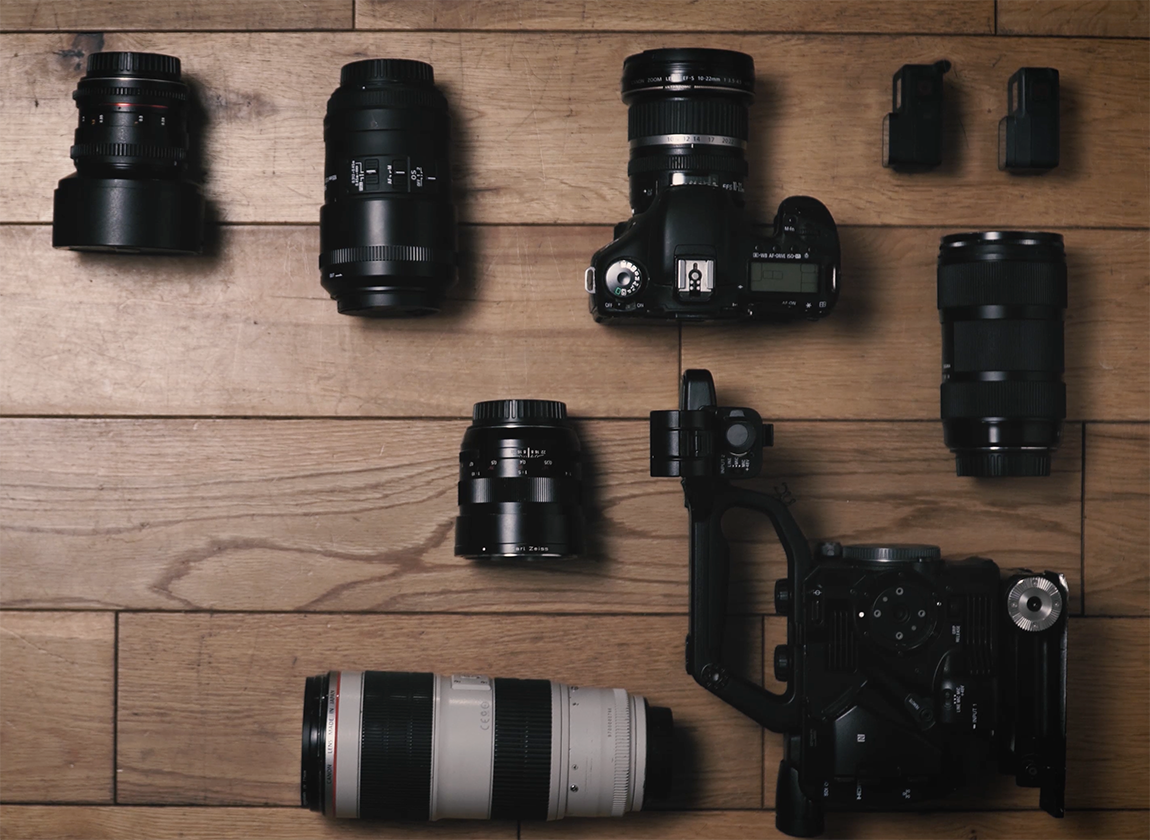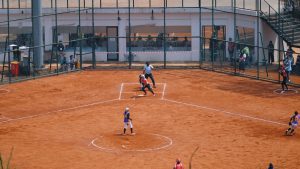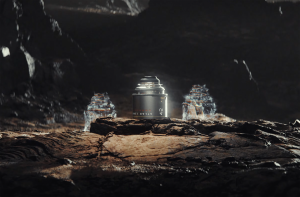Today we’re going to discuss some of the key focal lengths and lenses you’ll need for any type of shooting scenario. Whether you’re just starting out on your filmmaking journey or need a little refresher, there’s something here for everyone. But, before we discuss the lenses, we need to talk about the difference between zoom and prime lenses.
Zoom vs. Prime Lenses
Before we discuss which focal lengths are best for starting your videography career, it’s important to know the distinction between zoom and prime lenses. Zoom lenses allow us to adjust the focal length within a certain range — for example, from 24mm to 70mm or from 70mm to 200mm, or you know . . . zooming. This makes them versatile and convenient to use, as they can cover a range of focal lengths without the need to switch lenses. This is perfect for solo shooters. However, because they have moving parts and a more complex design, zoom lenses tend to be heavier, larger, and more expensive than most prime lenses. You’re paying for more focal lengths, essentially.
Prime lenses, on the other hand, have a fixed focal length, for example, 50mm or 85mm. They tend to be smaller, lighter, and less expensive than zoom lenses of similar quality, and they often have wider maximum apertures, which allow for more light to enter the lens and create a shallower depth of field. These are great for getting that intense bokeh you always wanted. Prime lenses also tend to produce sharper images with less distortion than zoom lenses, as they have fewer optical elements.
In general, zoom lenses are more versatile and convenient for situations when you need to quickly adjust the focal length, such as in a corporate event or a wedding, while prime lenses are better for situations where you have more control over the situation, like an interview or a narrative scene. So, that being said, let’s talk about the best lens options for your journey into the world of filmmaking!
24-70mm Zoom Lens
Anytime somebody asks for a lens recommendation, without any hesitation, I’m very quick to respond with “Canon 24-70 or Sigma 24-70mm.” There’s no way around it, 24-70mm zoom lens is the perfect lens for literally any type of shooter. It doesn’t matter if you’re in the business of wedding videography, corporate work, documentary, or landscape/nature videography — this focal length covers any type of shot you might need to get.
This is the lens I have probably used the most throughout my professional career. It has become my little, reliable best friend that has hands-down gotten me to where I am now.
35mm Prime Lens
One of the primary advantages of using a 35mm lens is for its wide view; it’s not too wide, but it captures a relatively large area. Compared to wider focal lengths such as 28mm or 24mm, a 35mm lens typically has less distortion around the edges of the frame. This makes it a great focal length for capturing the environment and your subject in one frame. You get a bigger “idea” of what is in the image. Additionally, 35mm prime lenses are typically lightweight and compact, which makes them easy to carry around and use in a variety of situations.
Usually one of my go-to moves for interview setups is to have my B-cam positioned off to the side, with a 35mm lens attached getting the subject’s upper body in frame. The shot is wide but it’s not too wide, and it’s tight but it’s not too tight. This Sigma 35mm f/1.4 is the lens I own, and I can highly recommend this to anybody in need of a great, affordable prime lens.
The “Nifty Fifty” 50mm
Another prime lens to add to your Pelican case, this absolute staple of the filmmaking community is such for a reason. It has great image quality, a low price, and it’s ergonomically friendly. This singular piece of glass covers a lot of ground for just one lens.
The term “nifty fifty” originated from the Canon 50mm f/1.8 lens, which was nicknamed this due to its compact size, light weight, and relatively low price point. When I bought mine back in 2013, it was about $90 USD? I don’t think the price has really changed at all, either. However, this “nifty fifty” term has since been used more broadly to refer to any 50mm lens with similar characteristics, regardless of brand. It’s mostly just about being an inexpensive, 50mm lens that shooters can throw in their bag to always have on hand.
Does this type of lens serve any specific purpose while on a shoot? More than anything, it’s a good lens for close-ups or any type of portraiture-style composition. It’s not a landscape lens. It closely mimics the field of view of the human eye, and the wide maximum aperture allows for a shallow depth of field and good low-light performance.
18-35mm
Another crucial zoom lens to add to your repertoire is the classic 18-35mm zoom lens. While the 24-70mm lens covers all the different types of closer, portrait style compositions, the 18-35mm focal length is the perfect choice for anybody who needs to get ample B-roll at an event. This wider zoom lens allows you to get more in frame, covering a greater area.
The winning combination is an 18-35mm while using a gimbal. You’ll be able to get wide, stable, beautiful footage without being too close to your subjects or missing certain actions. This setup is the ideal move for any aspiring wedding videographer (or photographer). Often, I’ll be shooting my subjects performing some type of action, whether it’s walking around or talking to each other. I’ll start recording with the lens set at 18mm, then after getting enough general wide footage, I’ll zoom in to 35mm and get tighter coverage of their faces, hands, mouths. This versatility in the lens gives you more to work with in the edit.
A Good Macro Lens
This might be the most obscure recommendation on this list. But having a good macro lens can sometimes be the little extra “thing” your project needs to be exceptional. Its important to think of your shoots in terms of the edit. Will you have enough coverage to make for an interestingly paced video? One aspect of this is having wides and close-ups, which is where macro lenses come into play.
They typically have a fixed focal length (prime lens) and a narrow aperture, which helps to create a shallow depth of field and blur the background, allowing the subject to stand out. These lenses are about showcasing one specific thing, usually. They also have a longer focusing distance than standard lenses, which helps to prevent the lens from casting a shadow on your subject.
These lenses are designed for taking extremely close-up shots of small subjects such as insects, machinery, and other tiny details. Macro lenses are capable of magnifying the subject to a life-size ratio of 1:1 or greater, allowing videographers to pick up the tiny details and textures that you normally wouldn’t think to notice. I decided to add this one to the list because I can’t tell you how many times a client has asked for a very specific, extremely close-up shot of something that they want to focus on. For example, while shooting a machine that created shirts on the spot, they asked to get one specific little bolt, luckily I had my 100mm macro lens already ready to go.
Cover Image via Videvo.
Looking for filmmaking tips and tricks? Check out our YouTube channel for tutorials like this . . .
Looking for more tips and tricks? Check out these articles . . .




